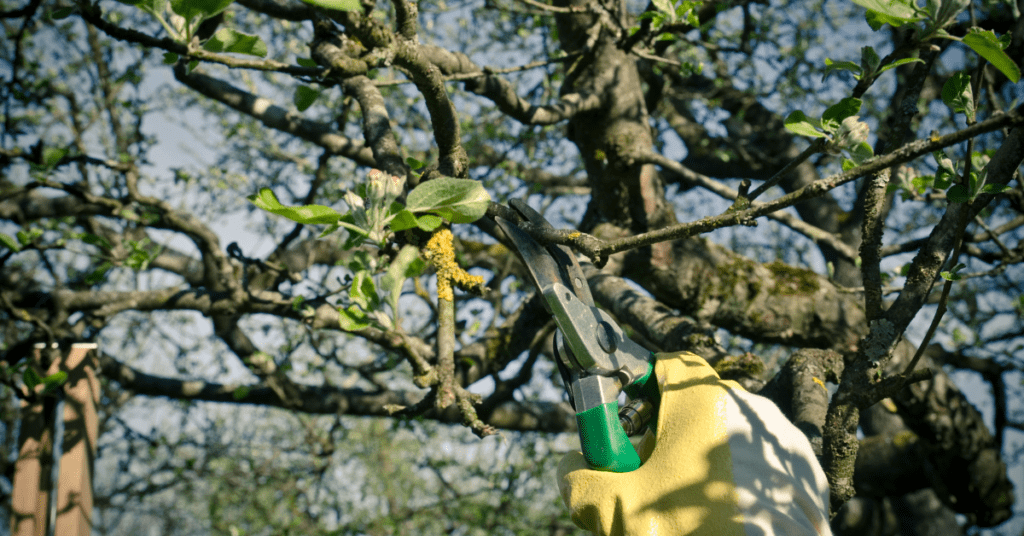In the life cycle of every tree in your backyard, a time will inevitably come when it requires a bit of tender care in the form of pruning. This practice isn’t just about aesthetics; it’s crucial for the tree’s overall health and vitality. In this comprehensive guide, we will walk you through everything you need to know about making proper pruning cuts to ensure your trees remain healthy, vibrant, and visually appealing.
Recognizing the Need for Pruning
Just like any living organism, trees communicate their needs. It’s essential to listen to their signals to determine when they require care. Signs that it’s time for proper tree pruning include broken branches, dead or diseased limbs, weak branches, branches that cross and rub or branches that encroach upon utility lines. While identifying the need for pruning, it’s also crucial to recognize signs when tree removal might be necessary. Discover the 6 signs it might be time to remove your tree for further insights. Visible storm damage is another indicator that your tree needs attention.
The Best Season for Tree Pruning

Choosing the right season for pruning is vital to maximize the tree’s chance of recovery and healthy growth. Late winter or early spring is generally the best time to prune most trees when they are in their dormant state, allowing for minimal disruption to their natural processes and promotes new growth for the upcoming season.
- Pruning Spring-flowering trees: These trees should be pruned after they have finished blooming to avoid removing the season’s flowers.
- Pruning Summer-flowering and Fruit-bearing Trees: To encourage robust growth, prune these trees in late winter or early spring.
- Pruning Evergreen Trees: For evergreen trees, it’s best to prune in early spring before the emergence of new growth.
Choosing the correct season for pruning is crucial, just as it is for tree removal. Learn more about the best time of year to remove trees for comprehensive tree care.
How to Make a Proper Pruning Cut: A Step-by-Step Guide
Creating a proper pruning cut is a fundamental aspect of effective tree care. Homeowners should familiarize themselves with the three-cut pruning method for optimal results.
Step One
Begin by making an undercut on the underside of the branch, approximately 12 inches from the branch collar.
Step Two
The second cut should be made on the topside of the branch, about six inches from the initial undercut. This will allow the branch to snap and fall away.
Step Three
Finally, trim the remaining stub back to the root collar, cutting at a 45-degree angle. This angle facilitates healing and reduces the risk of disease.
Pruning Rules

Pruning should always serve to maintain the tree’s health, strength, and a uniform appearance. Only undertake minor pruning tasks yourself; for larger trees, it’s advisable to enlist the expertise of certified arborists such as Anchor Tree Service.
Species-Specific Pruning
It’s important to note that the species of a tree can significantly influence the pruning process. Excessive pruning can limit essential tree processes like carbohydrate supply, nutrient uptake, and storage, leading to decline and dieback. Understanding species-specific pruning needs is vital. Gain more insights on this by reading about how to properly maintain each variety of trees.
Pruning Tools and Safety Precautions

Safety is paramount during pruning. Always wear appropriate eye protection and gloves. Ensure that your pruning equipment is sharp and clean to make precise cuts while minimizing damage. After pruning, you may need to deal with tree stumps. For creative ideas, check out our article on what to do with a tree stump in the front yard.
Pruning Mistakes to Avoid
Common pruning mistakes can have detrimental effects on your trees. Steer clear of practices like topping, improper pruning cuts, over-pruning, pruning at the wrong time, and using incorrect tools and techniques.
Conclusion
Proper tree pruning is not just about enhancing the visual appeal of your landscape; it’s a vital practice that promotes the health and longevity of your trees. Armed with the right knowledge, tools, and techniques, you can ensure that your garden remains a safe and enjoyable space for years to come. Remember, when in doubt, it’s always wise to seek the assistance of professional arborists like Anchor Tree Service who can provide expert guidance and care for your precious trees. For the best results and professional guidance, consider the benefits of hiring an ISA Certified Arborist. Learn why this is important in our detailed guide on why you should hire an ISA Certified Arborist.
As you’ve delved into the art and science of proper pruning, it’s clear that maintaining the health and beauty of your trees is a task of both skill and knowledge. In Victoria, BC, our team at Anchor Tree Service is ready to bring that expertise directly to your garden. Specializing in a range of tree services, from detailed pruning to comprehensive tree health management, we’re committed to ensuring the vitality and aesthetic appeal of your trees. Our local know-how and professional care are just what your trees need to thrive. Don’t let the complexities of tree care overwhelm you. Reach out to us for expert tree services in Victoria, BC, and take the first step towards a healthier, more beautiful landscape.


